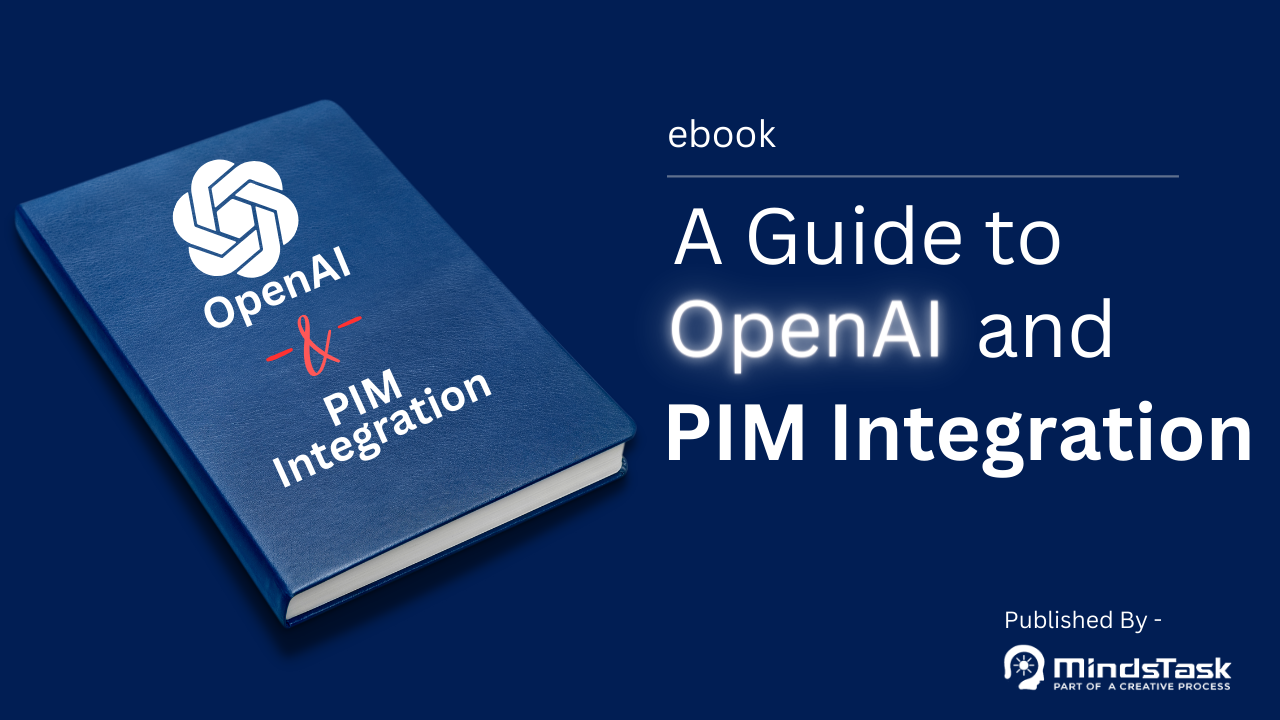Today, organizations cannot digitally thrive without high-quality, trusted, and up-to-date product information. A PIM system is essential for businesses with large or complex product catalogs, multiple sales channels, or strict quality control requirements.
ROI, or return on investment, is a simple concept that can be applied to nearly any business decision. ROI is calculated by dividing the benefits of an investment by the costs of the investment. As a business leader, you should always be thinking about ways to increase your ROI.
One way to do this is to invest in a product information management (PIM) system, but you’re not sure if it’s worth the investment. This blog post will explain why the PIM system is essential for achieving higher ROI and how it can help your business grow. We’ll also discuss the various benefits of a PIM system and how it helps organizations achieve success.
Key ROI factors
- Understand your customer acquisition costs – Your customer acquisition costs (CAC) are the total costs of acquiring new customers through marketing and sales activities divided by the number of new customers acquired during a period of time. In order to lower your CAC and increase ROI, you need to reduce the cost per lead and close more sales. There are various ways to do this, such as improving your marketing strategy, website design, and sales process.
- Focus on Customer Retention – Another way to increase ROI is by focusing on customer retention. It is cheaper to keep existing customers than to find new ones. Offer loyalty programs, discounts, or quality customer service to keep them returning. You can also upsell and cross-sell to existing customers to make more revenue from them.
- Increase Average Order Value – You can also increase ROI by increasing the average order value (AOV). This can be done by selling higher-priced items or adding complementary products/services. For example, if you own a restaurant, you can upsell customers by offering them dessert or coffee after their meal.
- Decrease Churn Rate – Churn rate is the percentage of customers who stop doing business with you over a period of time. To decrease churn rate and increase ROI, improve the quality of your products/services and offer excellent customer service. You can also make it easier for customers to cancel their subscription or membership with you.
- Improve Operational Efficiency – Operational efficiency is how well your company uses its resources to produce outputs. To improve operational efficiency and ROI, streamline processes, automates where possible, and outsource non-core functions. Doing so will help save time and money, which can be reinvested into the company.
Many organizations rely on high-quality, trusted, and up-to-date product information to increase ROI. PIM can help you manage your product data more effectively, making it easier to create and distribute accurate product information across all sales channels.
Let’s find out what exactly PIM is and why it should be a key part of your business strategy.

What is product data management, and why do you need it?
PIM is a system that helps businesses manage all of the data related to their products, from design and development through manufacturing and sales. A PIM system centralizes all of this data in one place, making it easy for different teams to access and use the information they need. It saves time and ensures everyone is working with the most up-to-date information.
Having a PIM system in place can help your business in a number of ways. First, it can help you save time by making it easy for team members to find the information they need. Second, it can help improve communication and collaboration between different departments. Third, it can help you avoid errors by ensuring that everyone is working with the same accurate data. Moreover, a PIM system can help you make better decisions by giving you access to all relevant data in one place.
In 2020, the global PIM market was valued at $9.90 billion in 2019, and is projected to reach $59.25 billion by 2027. And to put it into further perspective, it’s growing at a CAGR of 25.2% from 2020 to 2027.
According to Allied Market Research, “In the digital economy, both B2C and B2B customers are demanding more convincing, frictionless, and personalized commerce experiences. Retailers, manufacturers, and brands must deliver accurate product data to all their distribution channels to optimize the story being told around their products. Product information management (PIM) is an essential tool for organizations to effectively sell their products and services across the many channels through which customer engagements happen.”
How does a product information management (PIM) system help improve ROI?
Product information management systems help businesses to centralize, manage and disseminate product data across their organization. It can be beneficial for businesses with large or complex product catalogs, multiple sales channels, or strict quality control requirements. Here is how a PIM system improves ROI:
- Increase conversion rates: PIM can help increase conversion rates by ensuring potential customers can find the products they are looking for and have all the information they need to make a purchase decision.
- Reduce returns: By providing accurate product information, PIM can help to reduce the number of product returns due to incorrect or missing product data.
- Minimize operational costs: PIM can help organizations to reduce the costs associated with managing product data, such as the cost of maintaining multiple product catalogs or the cost of printing and distributing product information.
- Boost brand awareness and sales: PIM can help brands to increase brand awareness and sales by ensuring that potential customers can easily find products, purchase them, and get a seamless purchase experience across all channels.
- Improve product content quality: PIM can help businesses to improve the quality of their product information by ensuring that all product data is accurate and up-to-date. It saves time and money and reduces the chances of errors.
- Greater control: PIM can give businesses greater control over their product information, making it easier to manage product data and ensure accuracy across all channels.
- Enhance compliance: PIM can facilitate businesses to maintain compliance with regulatory requirements by ensuring that product information is accurate and up-to-date.
- Enable Omnichannel capability: By increasing sales and conversion rates through improved omnichannel power and personalized experiences, PIM can help drive more sales and higher conversion rates.
- Automate manual tasks: PIM systems automate creating, maintaining, and enriching product catalogs, reducing the need for manual work. It can free up your team’s time to focus on other tasks that will improve ROI, such as developing new marketing campaigns or working on customer service initiatives.
- Improve customer satisfaction: PIM software can help improve customer satisfaction in two ways: by improving operational efficiency and enhancing product experience across channels.
How to get started with product information management?
The initial step is to understand what kind of product data you need to centralize in your PIM system. Typically, this will include product names and descriptions, pricing information, images and videos, technical specifications, and marketing collateral. Once you clearly understand the types of data you need to collect, you can start determining which tools and processes will be best for managing this data.
There are a few different approaches to setting up a PIM system. The most common practice is to use a spreadsheet or database tool like Microsoft Excel or Access. However, these tools can quickly become cumbersome and difficult to use for companies with large amounts of product data. For these organizations, a dedicated PIM system like Pimcore, Akeneo, inRiver, or IBM InfoSphere MDM Product Center may be worth considering.
Once you have chosen the right tools for your needs, the next step is collecting and entering your product data into the system. This process can be daunting, but there are a few things you can do to make it easier.
- First, reach out to your suppliers and ask them for help getting started. Many suppliers already have their products entered into PIM systems and can provide you with templates or Export files that will make it easy to import their data into yours.
- Second, take advantage of Product Data Enrichment services to help fill in any missing data points.
- Start collecting and entering your product data into the system using templates from suppliers whenever possible.
- Utilize enrichment services when needed but also consider automating the collection process with barcodes or RFID tags when possible!
Investing in PIM software can take your business to the next level and provide your customers with the best possible experience.
The Conclusion
If you’re looking to improve your marketing performance and see a corresponding increase in revenue, product information management (PIM) may be the answer. PIM can help manage product data more effectively, improving accuracy and completeness of data as well as catalog organization for better search engine visibility and customer engagement. With the proper implementation, PIM can provide several benefits that improve business ROI.
Bonus Read:
Download a FREE copy of eBook: Product Catalog Management- Discover the Importance, Conquer the Challenges, and Transform Your Catalog with Automation
FAQ
What is the difference between PIM and MDM?
PIMs (products, interactions, and mashups) are the building blocks of MDM (Master Data Management). PIMs are the data that is used to populate and manage master data. Master data is a critical corporate asset that needs to be cleansed, standardized, and enriched before it can be used for anything from customer 360 views to product catalogs and pricing. MDM solutions provide the governance and management needed to ensure that this master data is high quality and synchronized across different systems.
How does a product information management system work to improve ROI?
A PIM system can also help improve ROI by optimizing product data used across the organization. For example, a PIM system can help ensure that all departments use the most up-to-date product data, leading to increased efficiency and fewer mistakes. Additionally, a PIM system can help reduce costs by automating specific tasks related to product data management, such as updating prices and descriptions across multiple channels. And finally, a PIM can help you to better understand your customers by tracking their purchase habits and preferences. This intelligence can help you make more informed decisions about what products to develop and market. Altogether, these benefits can add up to increased profits and improved ROI.
How to calculate the ROI of a PIM system?
There's no one-size-fits-all answer to this question, as the ROI of a PIM system will vary depending on the specific needs and goals of your organization. However, there are some general things you can keep in mind when evaluating the ROI of a PIM system. First, a PIM system can help you streamline and automate many processes associated with managing product data. It can save your organization time and money by reducing duplicate effort, reducing errors, and improving efficiency. Second, a sound PIM system will be scalable, so it can grow with your organization as your needs change. This means that you'll be able to get more value out of your investment.
What is Pimcore PIM?
Pimcore's enterprise product information management (PIM) software centralizes and harmonizes all your marketing, sales, and technical product information. The Open Source PIM platform can acquire, manage, and share any type of digital data and is designed for easy integration into existing IT system landscapes.



